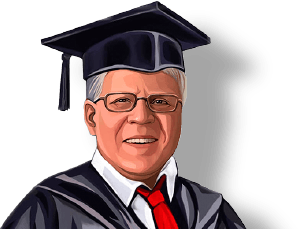
Seam Welding
Questions and Answers
Burrs in seam welding might be describing weld flash or material that escaped from under the weld wheel during the weld and forms an irregular ridge along the length of the seam weld. All resistance welds seam or spot can leave some deformed material around the periphery of the weld zone. Generally this is not enough to be called a burr but in some cases the indentation would be cosmetically offensive if the surface were to be subsequently painted or were in a very visible location like the hood of a car. Product designers avoid welds in these locations.
Where seam welds generate visible indentations or slight raised areas which are not desired they can be treated as cosmetic welds. The weld schedule and electrodes, in this case weld wheels are selected to reduce the amount of heating and expulsion on the side of the part where the burr condition is not wanted. The wheel weld face might be increased. The force may be increased. This reduces contact resistance and surface heating. Adjustments to current and weld speed can be made. All of these would be made with the intent of reducing the surface heat and amount of material being expelled or pushed out during the welding process.
Yes, seam welding wheels can be dressed on the machine. On some machines the wheels are driven by knurled drive wheels that drive and also maintain the shape of the wheel at the same time. The photo below shows a knurl drive system. The wheels are continually driven and dressed each revolution.
Seam welding drive shafts carry current, deliver force and rotate during the seam welding operation. Duty cycles, currents and forces are high. The shaft operates in a housing which is filled with conductive grease and has current carrying shoes which ride on the shaft to deliver current. Eventually these conductors and the shaft wear and service is required. Sometimes people ask if they can the buildup the worn shaft with new copper and machined it back to size? They are suggesting the use of plasma or some welding process to lay down this layer of copper. Unfortunately the resultant laid on copper has some amount of porosity when compared to the original copper it is replacing. This soft porous copper will not wear well or conduct the high currents experienced in seam welding.
Yes, seam welding wheels can be dressed automatically. On some machines the wheels are driven by knurled drive wheels that drive and also dress and maintain the shape of the wheel at the same time. The photo below shows a knurl drive system. The wheels are continually driven and dressed each revolution.
Intermittent and continuous seam welds are very similar. In fact they can be run on the same machine. The only difference is the spacing of the weld. A change in the machine settings could produce either weld.
A continuous seam weld is one where the individual spot welds produced overlap and normally form a fluid tight seam weld. Intermittent welds are spaced out and therefor are not fluid tight. Sometimes this type of weld is referred to as a roll spot weld. Generally the roll spot/intermittent process can produce more feet of product faster than the continuous seam weld.
Page 8 of 15
Have a Question?
Do you have a question that is not covered in our knowledgebase? Do you have questions regarding the above article? Click here to ask the professor.
